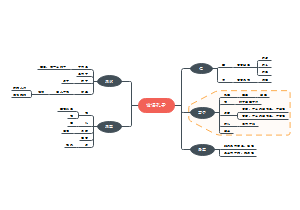导图社区 Laypeople's Understanding of R
- 1.3k
- 0
- 0
- 举报
Laypeople's Understanding of R
Laypeople's Understanding ofRadioactivity and Radiation:Results and discussion、Knowledge of the radiation process(10-17)、Radiation fear and attitudes(18-22)
编辑于2022-04-06 10:11:08- Laypeople's Understanding of R
Laypeople's Understanding ofRadioactivity and Radiation:Results and discussion、Knowledge of the radiation process(10-17)、Radiation fear and attitudes(18-22)
- The Hound of the Baskervilles
The Hound of theBaskervilles:The Stapletons of Merripit House、Baskerville Hall、Three Broken Threads、Sir Henry Baskerville
Laypeople's Understanding of R
社区模板帮助中心,点此进入>>
- Laypeople's Understanding of R
Laypeople's Understanding ofRadioactivity and Radiation:Results and discussion、Knowledge of the radiation process(10-17)、Radiation fear and attitudes(18-22)
- The Hound of the Baskervilles
The Hound of theBaskervilles:The Stapletons of Merripit House、Baskerville Hall、Three Broken Threads、Sir Henry Baskerville
- 相似推荐
- 大纲
Laypeople's Understanding of Radioactivity and Radiation
Methods
Respndents(5)
270 students in an physics course at the University of Oslo
53% were women
45% were men
2%did not state sex
This group was chosen for reasons
The group was fairly large and easily accessible
The group mainly consisted of first-year students who had completed secondary education,but had not received formal instruction on radiation since leaving school
The questionnaire(7)
Two of these gave background infromation about gender and background in secondary school
Seven measured knowledge and understanding of radioactivity and radiation
Four were designed to give information about radiation fear and attitudes
Coding and analysis(8.9)
All answers were assigned to the appropriate categories and coded
Each of the questions concerning knowledge and understanding was appointed a maximum number of points
Results and discussion
Knowledge of the radiation process(10-17)
Aim
To get an overview of the rsppondents' understanding of central concepts
Discovery
Question2
62% answered in the affirmative
50% believed that nuclear power stations could cause acid rain
Question3
89% knew of the three radiation types
34% could state what the radiation consisted of in each case
Question4
Laypeople had difficulties distinguishing the concept of radiation from that of radioactive material
Question5
25% knowed the difinition of one becquerel
Question6
74% gave a definition which might be called correct
Some of acceptable answers conceal a misunderstanding:It betrays a lack of understanding that disintegration of a radioactive atom involves the creation of a new nucleus
Question7
55% attemped an answer
10% answered spice
12% said radiation made the spice radioactive
Question8
75% answers were cancer
49% mentioned mutations
35% mentioned genetic damage
Summary
The investigation revealed an incomplete understanding of some central concepts concrening radiation phenomena
Radiation fear and attitudes(18-22)
Aim
To detect whether respondents feared radiation and to investigate their attitudes to the applications of radiation
Discovery
Question1
Only 16% were afraid of being exposed to radiation in their daily life
More women than men were afraid
No significant difference was found between the high and low score group
Question2
62% were believed that there were sources of radiation in their home
Question9
36% answered "yes"and 43"no"
14% were uncertain and 7% failed to answer
More women than men were negative to nuclear power
High-score group being more positive
Question10
57% answered "yes "and 17%"no"
13% were uncertain ,13%failed to answer
More women than men believed the Komsomolets was a threat
No difference was found between the high-score group and low-score group
Summary
Women tended to be more worried about radiation and more sceptical about nuclear power than were men
Implications for improving public understanding of radioactivity and radiation(23-28)
Current situation
The lay model of radiation phenomena differs from the expert model
Analyse of the situation
From the view of constructivist approach to learning
People do not feel the need to apply school knowledge to phenomena they encounter in real life
The answers to the questions concerning real-life situations which had been treated in the media might be affected by the media had taught them
Solutions of the situation
Millar developed a teaching unit on radioactivity and ionising radiation that took into account the pupils' preconceptions
Taking the lay conceptions into account and increasing in the integration betwwen factual information and practical considerations
Introduction
Ionising radiation (1)
A life force
A doomsday power destined to cause the ulitimtae destruction of mankind
Why should people need to know radiation?(2)
The pragmatic reason
The democratic reason
The educational reason
How can knowledge be communicated to laypeople?(3)
His or her own understanding
External sources
Teachers
Peers
The mass media









